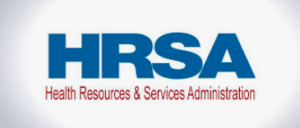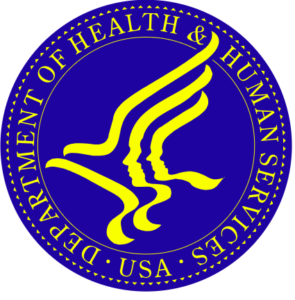- Social Factors Help Explain Worse Cardiovascular Health among Adults in Rural Vs. Urban Communities
- Reducing Barriers to Participation in Population-Based Total Cost of Care (PB-TCOC) Models and Supporting Primary and Specialty Care Transformation: Request for Input
- Secretary Kennedy Renews Public Health Emergency Declaration to Address National Opioid Crisis
- 2025 Marketplace Integrity and Affordability Proposed Rule
- Rural America Faces Growing Shortage of Eye Surgeons
- NRHA Continues Partnership to Advance Rural Oral Health
- Comments Requested on Mobile Crisis Team Services: An Implementation Toolkit Draft
- Q&A: What Are the Challenges and Opportunities of Small-Town Philanthropy?
- HRSA Administrator Carole Johnson, Joined by Co-Chair of the Congressional Black Maternal Health Caucus Congresswoman Lauren Underwood, Announces New Funding, Policy Action, and Report to Mark Landmark Year of HRSA's Enhancing Maternal Health Initiative
- Biden-Harris Administration Announces $60 Million Investment for Adding Early Morning, Night, and Weekend Hours at Community Health Centers
- Volunteer Opportunity for HUD's Office of Housing Counseling Tribe and TDHE Certification Exam
- Who Needs Dry January More: Rural or Urban Drinkers?
- Rural Families Have 'Critical' Need for More Hospice, Respite Care
- Rural Telehealth Sees More Policy Wins, but Only Short-Term
- States Help Child Care Centers Expand in Bid To Create More Slots, Lower Prices
HRSA Regional Office Offers Free Presentation on Securing Federal Grants
 The U.S. Department of Health and Human Services (HHS), Health Resources and Services Administration (HRSA), Region 3 Office, will present key steps and resources for seeking federal grants. Attendees will have a chance to learn about identifying HRSA grant opportunities, navigating the grant application process, and accessing technical assistance resources. In addition, the session will include tips from a current HRSA grantee and details on how to become a HRSA grant reviewer. Individuals at all levels of experience, from those considering a first grant submission to those with prior grant writing experience, are welcome. PLEASE NOTE: The registration site also includes the full grant writing series, Ready! Set! Write! Grant Writing from A to Z. Scroll down the page to register for the free federal session scheduled for Tuesday, June 4, 9:30–11:00 am. Click here to register!
The U.S. Department of Health and Human Services (HHS), Health Resources and Services Administration (HRSA), Region 3 Office, will present key steps and resources for seeking federal grants. Attendees will have a chance to learn about identifying HRSA grant opportunities, navigating the grant application process, and accessing technical assistance resources. In addition, the session will include tips from a current HRSA grantee and details on how to become a HRSA grant reviewer. Individuals at all levels of experience, from those considering a first grant submission to those with prior grant writing experience, are welcome. PLEASE NOTE: The registration site also includes the full grant writing series, Ready! Set! Write! Grant Writing from A to Z. Scroll down the page to register for the free federal session scheduled for Tuesday, June 4, 9:30–11:00 am. Click here to register!
Federal Poverty Income Guidelines for 2024 Released
 The Department of Human Services (DHS) has announced implementation in Pennsylvania of the 2024 Federal Poverty Income Guidelines (FPIG), which were issued by the Department of Health and Human Services (HHS) on Jan. 17, 2024. The FPIGs are the basis for FQHC sliding fees and the income eligibility limits for several categories of Medicaid whose regulations are published in 55 Pa. Code (relating to human services) and administered by the PA Department of Human Services. Click here to read the notice in the PA Bulletin.
The Department of Human Services (DHS) has announced implementation in Pennsylvania of the 2024 Federal Poverty Income Guidelines (FPIG), which were issued by the Department of Health and Human Services (HHS) on Jan. 17, 2024. The FPIGs are the basis for FQHC sliding fees and the income eligibility limits for several categories of Medicaid whose regulations are published in 55 Pa. Code (relating to human services) and administered by the PA Department of Human Services. Click here to read the notice in the PA Bulletin.
Senate Finance Committee Holds Hearing on Addressing SUD and Behavioral Health
 On Thursday morning, the Senate Finance Committee held a hearing: “Front Lines of the Fentanyl Crisis: Supporting Communities and Combating Addiction through Prevention and Treatment.” This was a great opportunity to highlight for Senators the great work that health centers are doing in behavioral health. PACHC sent background information on the impactful work being done by Pennsylvania’s FQHCs to Senator Casey, who is a member of the Committee. Dr. Abigail Herron, who works for an FQHC in New York state, testified at the hearing.
On Thursday morning, the Senate Finance Committee held a hearing: “Front Lines of the Fentanyl Crisis: Supporting Communities and Combating Addiction through Prevention and Treatment.” This was a great opportunity to highlight for Senators the great work that health centers are doing in behavioral health. PACHC sent background information on the impactful work being done by Pennsylvania’s FQHCs to Senator Casey, who is a member of the Committee. Dr. Abigail Herron, who works for an FQHC in New York state, testified at the hearing.
Hospitals Forced to Revamp Business Models or Risk Losing Patients
From Axios
Hospitals’ business models are being upended by fundamental changes within the health care system, including one that presents a pretty existential challenge: People have far more options to get their care elsewhere these days.
Why it matters: Health systems’ responses to major demographic, social and technological change have been controversial among policymakers and economists concerned about the impact on costs and competition.
- Communities depend on having at least some emergency services available, making the survival of hospitals’ core services crucial.
- But without adaptation — which is already underway in some cases — hospitals may be facing deep red balance sheets in the not-too-distant future, leading to facility closures and shuttered services.
The big picture: Many hospitals have recovered from the sector’s post-pandemic financial slump, which was driven primarily by staffing costs and inflation. But systemic, long-term trends will continue to challenge their traditional business model.
- Many of the services that are shifting toward outpatient settings — like oncology, diagnostics and orthopedic care — are the ones that typically make hospitals the most money and effectively subsidize less profitable departments.
- When hospitals lose these higher-margin services, “you’re starving the system that needs profits to provide services that we all might need, but particularly uninsured or underinsured people might need,” said UCLA professor Jill Horwitz.
And hospitals have long claimed that much higher commercial insurance rates make up for what they say are inadequate government rates.
- But as the population ages and moves out of employer-sponsored health plans, fewer people will have commercial insurance, forcing hospitals to either cut costs or find new sources of revenue.
By the numbers: Consulting firms are projecting a bleak decade for health systems.
- Oliver Wyman recently predicted that under the status quo, hospitals will need to reduce their expenses by 15-20% by 2030 “to stay viable.”
- Boston Consulting Group last year projected that health systems’ annual financial shortfall will total more than $200 billion by 2027, and their operating margins will have dropped by 10 percentage points.
- To break even in 2027, a “typical” health system would need payment rate increases of between 5-8% annually — twice the rate growth over the last decade, according to BCG. If the load is borne solely by private insurers, hospitals will need a 10-16% year-over-year increase.
Between the lines: This is the lens through which to view health systems’ spree of mergers and acquisitions, which have increasingly drawn criticism from policymakers, regulators and economists as being anticompetitive.
- For better or worse, when hospitals have a larger market share, they are in a better position to negotiate and bring in more patients, and they can dilute some of the financial pain of poorer-performing facilities.
- And when they acquire physician practices or other outpatient clinics, they’re still getting paid for delivering care even when patients aren’t receiving it in a traditional hospital setting.
- “I think the hospitals have sort of said … ‘We can keep doing things the same way and we can just merge and get higher markups,'” said Yale economist Zack Cooper. “That push to consolidate is saying, ‘Let’s not move forward, let’s dig in.'”
Yes, but: A big bonus of outpatient care is that it’s supposed to be cheaper. But when hospitals charge more for care than an independent physician’s office would have, or they tack on facility fees, costs don’t go down.
The other side: Hospitals are typically on the losing end of negotiations with insurers right now, thanks to how large insurers have become, and are “in an extremely difficult competitive position,” said Ken Kaufman, co-founder of consulting agency Kaufman Hall.
- Criticizing their mergers and acquisitions as anticompetitive is a “complete misunderstanding of the situation,” he said, and moving toward a new care model will take “an incredible amount of resources.”
Reality check: Hospitals account for 30% of the country’s massive health spending tab, and they’ll have to be at the forefront of any real efforts to contain costs.
- They’re also anchors in their communities and are powerful lobbyists, which helps explain why Congress has struggled to modestly reduce what Medicare pays hospital outpatient departments.
- And there’s a growing body of research showing that when hospitals consolidate, costs go up.”They’ve protected their portfolio, and that’s added to the cost of health care,” said Johns Hopkins professor Gerard Anderson.
New PRISM Resource! Preparing Behavioral Health Clinicians for Success and Retention in Rural Safety Net Practices

This study assesses how, among behavioral health clinicians working in rural safety net practices, the amount of exposure to care in rural underserved communities received during training relates to confidence in skills important in their work settings, successes in jobs and communities, and anticipated retention. The summary provides a quick overview of the study published in the Journal of Rural Health.
About PRISM
PRISM is a collaborative of State Primary Care Offices, Offices of Rural Health, Area Health Education Centers and other organizations that have partnered to collect data to identify and document outcomes to enhance the retention of clinicians. Through its design, this collaborative approach builds shared interest, cooperation and group wisdom in best practices to promote retention among the states.
PRISM provides a standardized and state-of-the-art way for states to gather real-time data from clinicians as they serve in States’ and the National Health Service Corps’ (NHSC) loan repayment, scholarship and other incentive programs. This retention data gathering system routinely surveys clinicians as they serve in these public programs to provide quality, consistent, real-time, convenient and ongoing data to inform the management and retention of clinicians in service programs.
PRISM is a complex, longitudinal data gathering system that incorporates the data collection, analysis and dissemination expertise of the Cecil G. Sheps Center for Health Services Research. State offices can easily enter, track and manage retention questionnaires.
PRISM training and technical assistance is provided by 3RNET, supported through a contract with the National Rural Health Association with funds from the US Health Resources and Services Administration (HRSA). State collaborative members pay an annual fee to support enhancements to PRISM.
For more information contact Jackie Fannell
Pennsylvania Broadband’s BEAD Initial Proposal Volume II Has Been Approved!
The Pennsylvania Broadband Development Authority (PBDA) is pleased to announce the National Telecommunications and Information Administration (NTIA) has approved Volume II of the BEAD Initial Proposal. Volume II outlines Pennsylvania’s BEAD implementation efforts including local coordination, the subgrantee selection process, labor standards and workforce readiness, low-cost service options and middle-class affordability. With this approval, the PBDA is another step closer to implementing the $1.16 Billion BEAD Program. The next steps include a process to identity partners who will ultimately build the infrastructure and provide access.
To ensure successful implementation of the BEAD Program, PBDA emphasizes the importance of early collaboration and coordination. Local government partners and internet service providers are uniquely positioned to work towards a collective goal of internet for all Pennsylvanians. To bolster that collaboration, the PBDA encourages all levels of local government to work together with interested internet service providers to identify solutions for the areas of need within their communities. The PBDA website includes resources to aid in those conversations. It will take a proactive approach toward coordination to close digital divide.
Lastly, to strengthen preparation for infrastructure expansion the PBDA established the Broadband Ready Communities (BBRC) Program. The BBRC Program will help to reduce procedural, policy, and permitting barriers to broadband deployment at the local level and to encourage broadband infrastructure investment within participating PA communities. Registration for the Program will close December 31, 2024. To take advantage of this resource, ensure you review the BBRC Program page, guidelines, and the process to register. Please direct any questions regarding the BBRC Program to ra-dcbroadbandready@pa.gov.
ICYMI: Explore HeatRisk Forecast Tool
 In case you missed it: last month, the National Oceanic and Atmospheric Administration and the Centers for Disease Control and Prevention created the nation’s first health-based alert system and heat guidance for clinicians. As part of this effort, the CDC also provides a HeatRisk Dashboard with resources for high-heat days, details on local air quality, and actions to stay safe in these conditions. Finally, the CDC has a site with clinical guidance for heat health, focused initially on treating children with asthma, pregnant women, and people with cardiovascular disease.
In case you missed it: last month, the National Oceanic and Atmospheric Administration and the Centers for Disease Control and Prevention created the nation’s first health-based alert system and heat guidance for clinicians. As part of this effort, the CDC also provides a HeatRisk Dashboard with resources for high-heat days, details on local air quality, and actions to stay safe in these conditions. Finally, the CDC has a site with clinical guidance for heat health, focused initially on treating children with asthma, pregnant women, and people with cardiovascular disease.
CMS Now Accepting Applications for Joining the Medicare Shared Savings Program
 Apply by June 17. The Centers for Medicare & Medicaid Services (CMS) is now accepting applications for Accountable Care Organizations (ACOs) to participate in the Medicare Shared Savings Program, in which groups of doctors, hospitals, and other health care providers collaborate, with the goal of offering coordinated high-quality care to people with Medicare. ACOs inexperienced with risk-based payments and who provide care to rural and underserved beneficiaries may be interested in Advance Investment Payments, and those interested in alternative payments for primary care providers may consider the ACO Primary Care Flex Model. For both of these options, ACOs must first apply to the Shared Savings Program. To learn more about the application process, register for the upcoming June 5 webinar on Completing Phase 1 of the Application and Avoiding Common Deficiencies. Email questions to SharedSavingsProgram@cms.hhs.gov.
Apply by June 17. The Centers for Medicare & Medicaid Services (CMS) is now accepting applications for Accountable Care Organizations (ACOs) to participate in the Medicare Shared Savings Program, in which groups of doctors, hospitals, and other health care providers collaborate, with the goal of offering coordinated high-quality care to people with Medicare. ACOs inexperienced with risk-based payments and who provide care to rural and underserved beneficiaries may be interested in Advance Investment Payments, and those interested in alternative payments for primary care providers may consider the ACO Primary Care Flex Model. For both of these options, ACOs must first apply to the Shared Savings Program. To learn more about the application process, register for the upcoming June 5 webinar on Completing Phase 1 of the Application and Avoiding Common Deficiencies. Email questions to SharedSavingsProgram@cms.hhs.gov.
HRSA Modifies Definition of Rural for FORHP Grants

Comment by May 28. On April 26th, the Federal Office of Rural Health Policy (FORHP) announced a proposed modification to the definition of ‘rural’ used to designate eligible areas for rural health grants. Because access to needed health care is likely to be reduced when roads are most difficult to traverse, FORHP proposes to modify the definition of rural areas by integrating the new Road Ruggedness Scale (RRS) released in 2023 by the Economic Research Service (ERS) of the U.S. Department of Agriculture. The proposed modifications are based on a data-driven methodology to identify areas with difficult mountainous terrain. All areas included in the current definition of rural would remain included.
Overdose Deaths Are in Decline

Last week, the Centers for Disease Control and Prevention released provisional data from their National Center for Health Statistics (NCHS) indicating an estimated 107,543 drug overdose deaths in the United States in 2023 – a decrease of 3 percent from the 111,029 deaths estimated in 2022. This is the first annual decrease in drug overdose deaths since 2018. Several states across the nation saw decreases; Nebraska, Kansas, Indiana, and Maine experienced declines of 15 percent or more. Still, some states saw increases. Alaska, Washington, and Oregon stood out with notable increases of at least 27% compared to the same period in 2022. Various factors make a difference in provisional counts versus final counts, such as records indicating “pending investigation.” The data are based on death records NCHS receives each month from state vital registration offices with no distinction between urban and rural.
